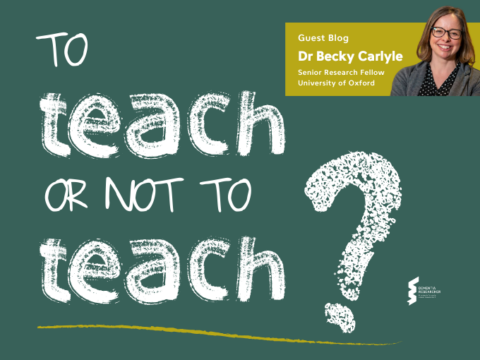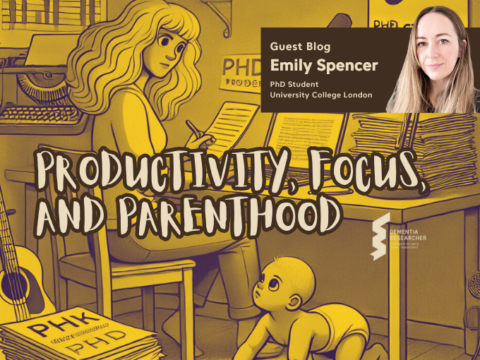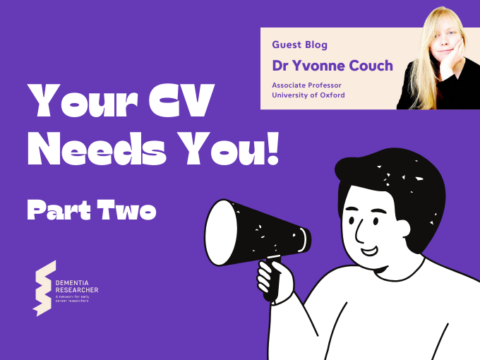Ask any university student to reminisce about their hours spent in a lecture theatre. I am sure they will tell you that some hours felt enjoyable, the material being covered and the way it was delivered was interesting and exciting. But, on the flip side, I am sure they will also tell you about the many hours they were fighting to keep awake, and perhaps not managing to. They might even utter the words ‘it was the most boring lecture ever’. In this blog I want to unpick what makes a lecture engaging or boring and offer some tips on how to prepare your first ever lecture – to keep those student yawns at bay.
I delivered my first ever lecture in November this year – well, strictly speaking this was my third, but I am considering this one to be my first as I was lecturing in my research area and I was able to prepare and choose the lecture material myself. And don’t get me wrong at the start I was giddy at the idea of making all of the choices myself – but as the lecture date drew closer and closer the pressure kept mounting. What content do I choose? How do I pitch it? What if I give them the wrong information?
Some of these thoughts sprung from our dear old friend imposter syndrome, rearing its ugly head – but after giving myself a pep talk – which mostly worked, I became very aware that knowing something and knowing how to explain something are two very different things. And that the actual delivery of the lecture was maybe only 5% of the actual work. 95% was preparation. Energy spent in identifying resources, paraphrasing content, organising material and then making it all accessible to my students.
So, we come to tip number one already: Plan your lecture (don’t wing it). Content choice is as important as arrangement of that content. I started by making an outline of the key pieces of information I wanted to deliver and then built around that. Thinking if the order made sense, and what background I needed to introduce for each topic. Once I had this ‘basic’ structure I then integrated examples and studies to help explain these concepts, introduced techniques and provide evidence for theories.
And tip number two goes hand in hand with planning: Don’t overload. Don’t be tempted to cram everything into one slide – try and stick to two or three main points at a time. Bite size summaries are great and I would recommend including multiple ones in your lecture. They are an effective way of highlighting key important information for each lecture section, which doubles up as a great tool for the students to have when revising for exams. And on lecture day they helped me keep an eye on the time and speed of my lecturing.
As I was building my lecture, I realised that there were pieces of information that I wanted to say but not necessarily have on my slides. Which leads me to tip number three: write up comprehensive notes for yourself. Hopefully you will be able to lecture on this topic again the following year and let’s be honest, you are not going to remember why you included that key word on your slide. Consider this as your lab book. Write everything in there, and write it comprehensively. Developing notes as you write up your lecture will also help you organise your thoughts and will highlight if anything doesn’t quite flow i.e if the transitions from topic to topic are right.

The mind can absorb no more than the seat can endure.
Ok, so now that you have selected all the important information that you are going to teach your students, how are you going to say it? And really the key here is to think about delivery early on. How are you going to communicate each topic? Think about what engages your attention. Will you be including visual aids or videos? Where are these best placed? So bring on tip number four: build in visual aids and support in your lecture slides. Audiovisual aids can help enhance learning by providing your students with additional support, emphasising what you are saying. But less is more here. Keep it uncluttered and relevant.
Bligh (2000) reports that attention span considerably decreases after 15-20 minutes. Of course, it’s quite impractical to offer a comfort break every 15-20 minutes in a 60-minute lecture, but you can be resourceful by incorporating ‘smart breaks’. And by smart breaks I mean activities that engage the audience. For example, you could ask a question or pose a problem for the audience to discuss and then report back on, or even the use of a simple multiple-choice question – using technologies such as Slido, where students can answer with their mobile phones, can help break-up the lecturing formality.
And now the lecture is all coming together – you have a narrative, slides, examples, some slick graphics – it’s time for quality control. And I really can’t emphasise this tip enough, number five: Run through your lecture ahead of your actual lecture. Especially as a first timer, it may be difficult to estimate how much material and how much detail you can cover in the allocated time. Much to my surprise I was really over time. I was averaging an hour and a half instead of the hour time slot! And it’s easily done, right? This is science that we are really passionate and excited about, and we want to include EVERYTHING. The temptation is to leave it in and just talk faster. Don’t do it. Do the edits. Be on time. An MSc student in our lab once told me that for one of her lectures, the lecturer was already 30 minutes over time before one of the students pointed this out – and rightly so, but the lecturer replied with ‘it will finish when I am done’. Self-entitled much?
So now that we have gone through some of the dos and don’ts of lecture making and presenting, I wanted to highlight a few final points to consider when developing your lecturing toolkit.
Who is your audience? And if you don’t know this, you really should find out before even starting to plan your lecture, as this will inherently shape the what and the how of what you teach. Never assume prior knowledge, unless you have access to and have checked previous course materials. Be mindful when using abbreviations. And try to remember that the students are encountering the material for the first time and might need additional time to be able to process it. Smart breaks can help with this.
The unknown surprises. You can’t plan for everything. It helps to familiarise yourself with the lecture room and the equipment ahead of time, so that you feel a bit more relaxed and comfortable by getting a feel for the space. Before you go live check that your lecture looks the way it should look and that if you have included videos, hyperlinks and extras that they all work. Of course, it’s not a guarantee that it will actually work when you are doing the real thing. In my lecture, I embedded a video to help explain the concept of neurovascular coupling and how we can image this in the brain. To my horror, the video, that played fine in my practice run in the lecture theatre, cut half way through, crashed my computer and the projector. It gets better – it did it two more times, until I skipped that slide all together. But I carried on lecturing, finding an alternative – I explained the video instead and made a joke out of it ‘now that we have seen neurovascular coupling in action, well actually not really, you are going to have to trust me on this one’. Point is, I survived; a wee bit flustered of course but the show went on. Take a pause, breathe, and stay calm.
Lecture recording. If your lecture is being recorded, try and be in tune with this. If you need to pause for whatever reason – like a technology glitch – yep exactly like in the above example! Pause the recording, sort out the issue, take a breath and press record again when you are ready. If a student asks a question – yes it does happen. Try and remember to repeat the question in the mic for whoever is going to listen to the recording. And as cringy as it may be – listen to yourself if you have the chance. This will give you insight into how you can improve – where there any gaps that you didn’t pick up on? Did everything come across as you thought it did?
And my final food for thought is, enjoy it – and I really mean this. Enthusiasm is contagious and students will really respond to a lecturer going beyond just delivering content.

Dr Gaia Brezzo
Author
Dr Gaia Brezzo is a Research Fellow based within the UK Dementia Research Institute at The University of Edinburgh. Gaia’s research focuses on understanding how immune alterations triggered by stroke shape chronic maladaptive neuroimmune responses that lead to post-stroke cognitive decline and vascular dementia. Raised in Italy, Gaia came to the UK to complete her undergraduate degree, and thankfully, stuck around. Gaia writes about her work and career challenges, when not biking her way up and down hills in Edinburgh.

 Print This Post
Print This Post






